Panic! at the NBA heartland
Are megamarket teams and superstar empowerment ruining the league's competitive balance?
Good morning. Let’s basketball.
Boulevard Montmartre, Camille Pissarro
Last week, basketball chartmaster supreme Kirk Goldsberry published a big, meaty argument on ESPN Insider making the case that the NBA’s elite talent is congregating in a limited number of the league’s largest markets. ($) If you don’t have Insider, you can hear from Goldsberry in interviews he did on Zach Lowe’s podcast as well as Pablo Torre’s ESPN Daily.
The gist is that the acquisition of superstar talent in New York (the Nets’ trio) and Los Angeles (with star duos for both the Lakers and Clippers) is a major threat to the integrity of NBA competition. You’ve heard the story before, only now the Nets and Clippers are good so it’s supposed to be more urgent.
The wrinkle now is how much of this superstar consolidation is driven by the superstars themselves, and that is totally interesting and worth exploring. This whole subject is worth exploring in great detail, and I’m glad for Goldsberry’s piece. But for me, the case falls short in a few areas.
1. Who is a superstar?
Anyone with access to the internet knows that the definition of superstar is fungible. At one point, to illustrate superstar consolidation, Goldsberry presents a map showing where all active players who have at any point in their careers been named to first team All-NBA are playing.

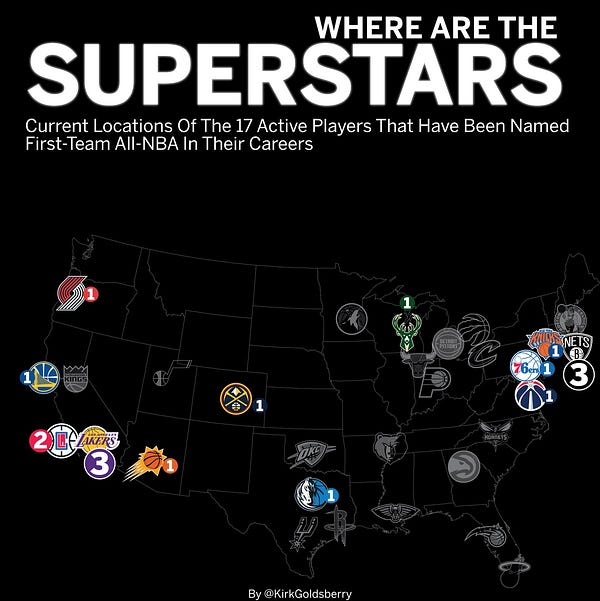
That sure looks like a compelling point! Nine of the 17 players in the league who have been on first team All-NBA are in New York or L.A. A damning indictment of superstar consolidation except … the Lakers have three? Oh yeah, Marc Gasol. He technically qualifies as a superstar under this definition. He made first team All-NBA once, six years ago and hasn’t been an All-Star in four years. I would argue that Marc Gasol is not currently a superstar.
Wait, the Knicks have a superstar? Oh … Derrick Rose made first team All-NBA in 2011. Ten years ago. He last made an All-Star team in 2012. Nine years ago. Currently a superstar? No. No, I don’t think so.
The Nets have three … Kevin Durant, yes, superstar, James Harden, yes, superstar, Kyrie Irving … did I miss him getting first team All-NBA at some point? No? OHH … DeAndre Jordan got that honor in 2016. Five years ago. He has made one All-Star Game in his entire career, four years ago. But on this chart, he counts the same as Giannis Antetokounmpo.
The problem isn’t Goldsberry’s criteria, it’s that the map is going to be radically different based on how you define superstar. Here’s an experiment. Let’s run it where we define superstar as anyone on any of the All-NBA teams in the last three years. That gives us 26 players. The biggest outliers are Blake Griffin and LaMarcus Aldridge. Even counting Griffin as a Net, you end up with eight of the “superstars” on New York or L.A. teams, or less than one-third. The Celtics, Sixers and Spurs each end up with the same number as the Lakers or Clippers. Importantly, twelve other teams have one. In all, 18 NBA teams currently have a player that has made one of the last three All-NBA teams. And none of them is the New York Knicks. That’s pretty decent distribution if you look at it that way!
It’s all in how you define superstar. Goldsberry’s method for counting has a couple of clear flaws in that a third of the superstars who have consolidated in large markets cannot be called superstars with a straight face. That really weakens the argument.
2. What is a megamarket?
Here’s another issue: what markets are we talking about when we talk about this issues? Goldsberry focuses on the two New York and Los Angeles teams. He does casually thrown in a reference to Stephen Curry as potentially being in a megamarket. The San Francisco Bay Area is the No. 6 largest media market in the country and the No. 5 largest metro area (as defined by OMB’s combined statistical areas). If the Warriors are a megamarket team, then at minimum the Bulls (no superstars) and Mavericks (one drafted superstar) are as well, and you might need to include the Wizards and Sixers and Rockets. That changes the math on the whole experiment.
This is symptomatic of this discussion writ large, and something I have struggled with in the past. When you talk about the NBA’s “markets” and the advantages associated therein, you have to carefully define your categories. “Big market” and “small market” are often the go-to categories without actual criteria for what makes a market big or small. This allows whoever is making whatever case about unfair advantages to mold the evidence in their favor.
Another way to define these markets is delineating between “glamour” markets and non-glamour markets. That lets you combine the New Yorks and Los Angeleses with Golden State and Miami, which is between Philly and Atlanta at No. 10 in the combined statistical area ranking. Why is Miami often rated as a “glamour” market but Atlanta never has been? Because Miami gets free agents. This can work … as long as you’re not using Miami’s propensity to get free agents as a definitional criteria to then critique how certain markets have a categorical advantage. In that case, it’s circular logic.
Goldsberry is arguing that superstar free agent signings are a path to success available to only select teams. But using his definitions he is ignoring Kevin Durant signing with the Warriors, Jimmy Butler signing with the Heat, Paul George re-signing with the Thunder*, LeBron signing with the Cavaliers in 2016 and any stars who re-signed with the teams that drafted them. Meanwhile, without including any of those oppositional data points, he does count DeAndre Jordan, Marc Gasol and Derrick Rose as superstars who joined megamarket teams. I’m not saying the definition piece is easy, but there are some issues here.
* Paul George re-signing with OKC before asking for a trade a year later is often overlooked in recent discussions of team-building and what moves are available to small market teams. OKC is one of the very smallest, and they traded for a star approaching free agency and convinced him to re-sign. Yes, he asked out soon after. But him re-signing allowed the Thunder to pick up Shai Gilgeous-Alexander and a bounty of picks. That is very material to the Thunder’s current rebuild project! Paul George’s free agency decision — an All-NBA caliber player deciding to sign with the Thunder after one season there despite being an unrestricted free agent — is a part of the story of OKC’s rebuild, like it or not.
3. Does this lead to actual competitive balance issues?
And finally, the rub: what good has this so-called unfair advantage been? The four L.A. and New York teams have one championship in the last decade. They have a combined one conference finals appearance in the last decade. The Clippers have never been past the second round of the playoffs. The Nets have won just a single playoff series since moving to Brooklyn. The Knicks have three winning seasons out of the past 20. The Lakers, until winning the title last season, had a franchise-record 6-year playoff drought during the era of increased superstar movement.
Yes, three of these teams are title contenders this season and all four may make the playoffs. This is an aberration for these teams, and free agency is certainly a factor. But sounding the alarms about New York and Los Angeles hegemony at this stage seems premature, especially when San Antonio, Toronto (a huge market that never gets defined as such in these debates, by the way) and Cleveland have championships in the last decade.
Look at it this way. The five smallest markets (as defined by CSAs) in the NBA are Memphis, OKC, New Orleans, Milwaukee and Indiana. The five largest-market teams are the Knicks, Nets, Lakers, Clippers and Bulls. In the last decade, where superstar free agent movement really took off, the smallest markets have zero league championships, one conference championship and seven conference finals appearances. The biggest markets have one championship (last year), one conference championship (last year) and two conference finals appearances (the reigning champs and the 2011 Bulls).
Maybe the megamarket teams do have an unfair advantage in recruiting superstar free agents. What the hell good has it been so far in terms of actual competition?
This is all worth discussing (I love these debates) and monitoring — these teams are clearly, finally on the rise. But any sort of panic is premature.
Scores
Friday
Pacers 137, Heat 110 — Spoiler alert but Indiana swept Miami in a weekend two-fer — that’s a great sign for the Pacers.
Jazz 115, Raptors 112 — Toronto hit 21 threes but the NBA’s pro-Utah conspiracy reared its ugly head to give the Jazz a +27 free throw advantage.
Pistons 113, Rockets 100 — Losing at home to the Pistons with Christian Wood in action is a bad, bad sign about the depths this Houston team can reach.
Saturday
Hawks 99, Lakers 94 — LeBron turned his ankle bad in the second quarter and had to leave the game, then missed Sunday’s game. He’s out indefinitely. Pretty crazy that this is the first ankle injury I can remember costing LeBron a game.
Meanwhile, that’s eight straight wins for the Hawks, who are now in the No. 4 seed.
Kings 105, Sixers 129 — The Kings beat the Celtics convincingly in one night, then the Embiid-less Sixers smack the Kings the next night. That should tell you what you need to know about the 2021 Celtics and Sixers.
Sunday
Pacers 109, Heat 106 — Indiana got the two Ws, but Bam Adebayo did put this dunk on Domantas Sabonis.
Thunder 114, Rockets 112 — Twenty straight losses for Houston. The single-season record is 26.
Pelicans 113, Nuggets 108 — Zion Williamson and Nikola Jokic in the same game? Sign me up every time.
Wizards 106, Nets 113 — Unf—kingbelievable. Blake Griffin’s first bucket as a Brooklyn Net … is a dunk. (I mean, certainly not the Blake of yore here, this was a little like CP3 dunking at the All-Star Game …)
Raptors 105, Cavaliers 116 — Eight straight losses for Toronto, 2.5 games out of the play-in and 4 games out of the No. 6 seed.
Sixers 101, Knicks 100 — This was an overtime score. Here’s Julius Randle with the Brent Barry bounce to get to OT. And then a real tough call on Randle in the closing seconds of OT to let Philly take the lead from the line.
Lakers 94, Suns 111 — Chris Paul becomes the sixth player in NBA history with 10,000 assists. Fitting that he got it on a pick-and-roll lob.
Mavericks 132, Blazers 92 — One heckuva statement by Dallas against one of the teams they’d like to catch in the West. Luka Doncic is a supernova.
League Pass Cupdate
No movement in the standings with limited action in the LP Cup this weekend, but San Antonio does extend its lead in first place with a win over the Cavaliers.
We have five LP Cup games through Wednesday and then three on Saturday. The No. 1 Spurs have a lot of action in the next couple of weeks.
Schedule
Kings at Cavaliers, 7:30 🏆
Thunder at Timberwolves, 8 🏆
Hornets at Spurs, 8:30 🏆
Jazz at Bulls, 9
Raptors at Rockets, 9
Celtics at Grizzlies, 9
Pacers at Bucks, 9, NBA TV
Hawks at Clippers, 10
Links
Awful news: LaMelo Ball has a broken wrist and is expected to miss the rest of the season. Bad news for people who enjoy watching fun players and really tough for the pretty good Hornets.
In related news, D’Angelo Russell took yet another L by tweeting an “Anthony Edwards for R.O.Y.” thing almost immediately after news broke about LaMelo’s injury. D’Lo is getting ratioed to hell.
Tom Haberstroh in TrueHoop on lingering effects of COVID-19 for some players.
Kevin O’Connor’s huge NBA Draft guide has gone live at The Ringer.
And finally: LeBarn James.
LEBARN JAMES.

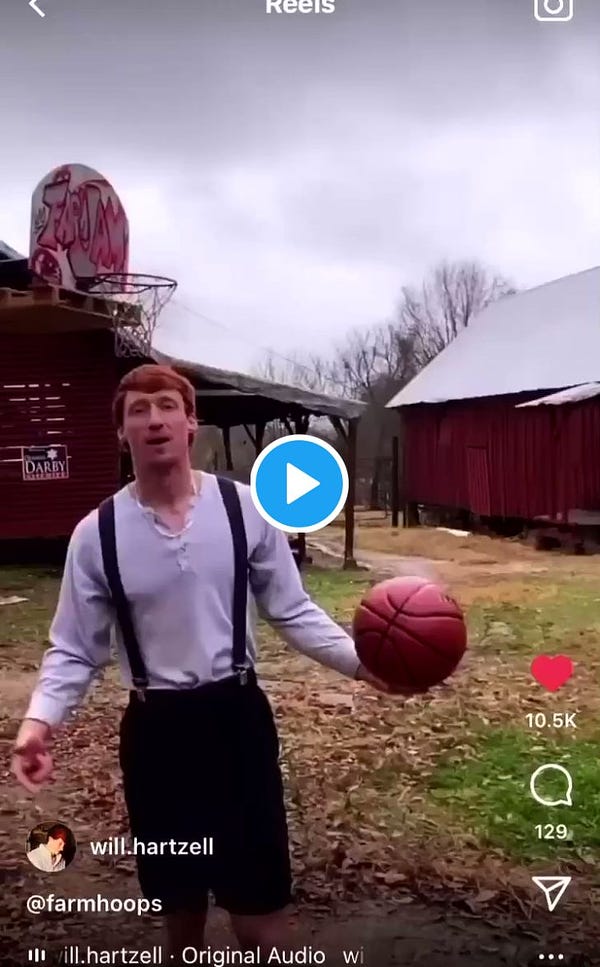
Be excellent to each other.





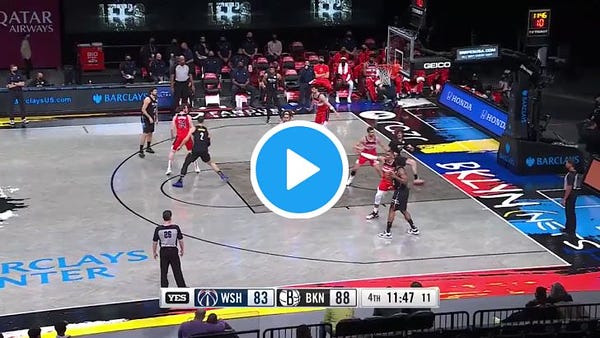

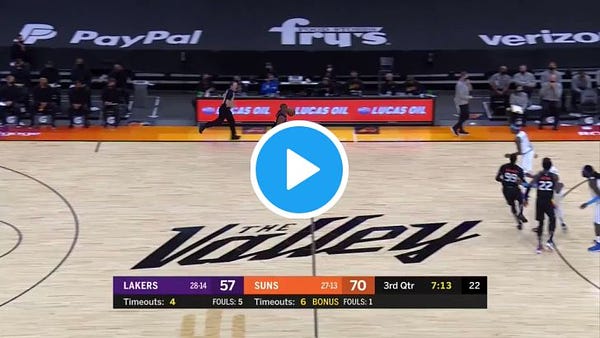
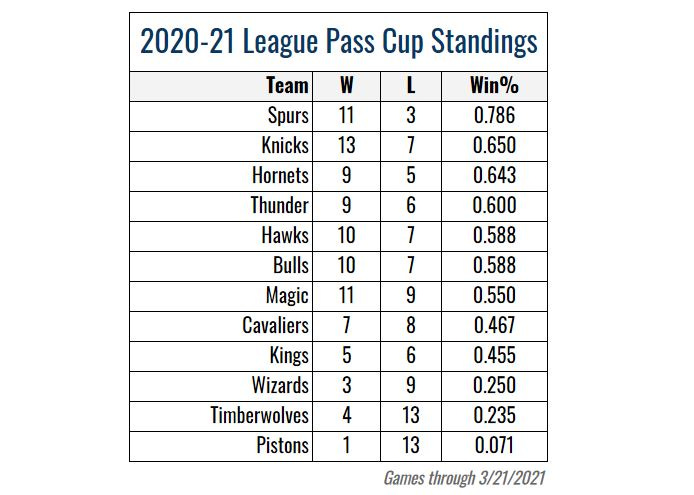

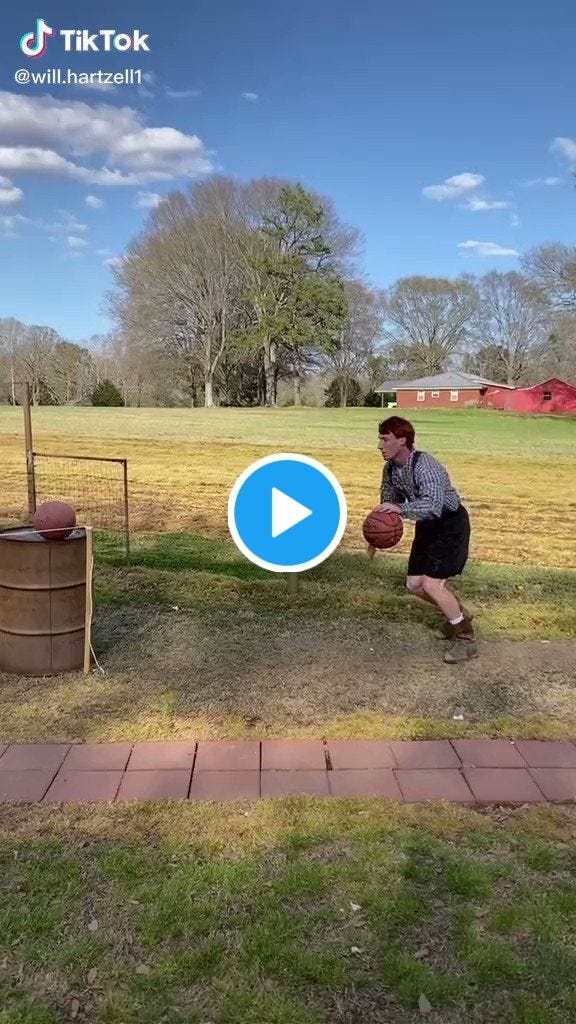
Slam and dunk. My goodness. There's so much more at play here than what was written at ESPN, and your critic is incredibly spot on